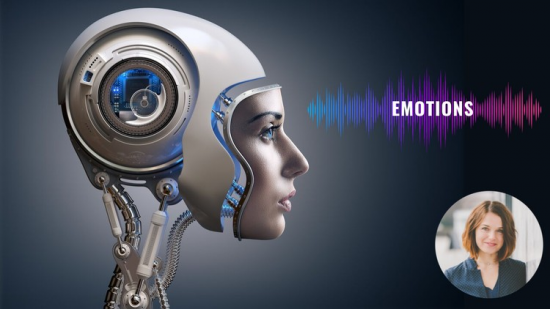
BestSeller | h264, yuv420p, 1280×720 | ENGLISH, aac, 44100 Hz, 2 channels, s16 | 2h 36 mn | 1.34 GB
Instructor: Jana Bergant
Sentiment analysis for a chatbot with Google DialogFlow, IBM Watson, AFINN. Sensitive chatbot with sentiment analysis
What you’ll learn
how sentiment analysis can benefit a chatbot
common implementations scenarios for a chatbot
use DialogFlow’s sentiment analysis to make chatbot emotionally sensitive. You’ll have a chatbot that can read the sentiment of the user’s message and act on it
learn how to use IBM Watson for sentiment analysis
learn how to use AFINN sentiment analysis
Requirements
knowledge of nodejs programming language
knowledge of GIT
Description
In this course, you’ll learn how to implement a sentiment analysis to a chatbot. You will teach your bot how to be emotionally sensitive. And most urgently how to spot a frustrated user and save the day.
In the course, we’ll be working with my code from the messenger chatbot course. Even if you did not take that course, you’d be able to take the code and work with it.
We’ll use Node.js for programming and GIT for deploying and version control. The bot will is hosted on Heroku, but you can simply host it anywhere else where they support Node.js. We’ll use DialogFlow to process natural language. DialogFlow will help us understand what users want.
In the process, you’ll learn how sentiment analysis works behind the scenes and how to implement sentiment analysis to a chatbot.
In the first section, we’ll take an overview of the app infrastructure and get familiar with the tech stack, which is the technology used in this course.
The second section will introduce you to Sentiment analysis, what is it and how it can benefit a chatbot. We’ll look at common implementation scenarios in a chatbot.
Do you want to know the difference between the rule-based approach and automatic approach with machine learning? We’ll go through examples of both and make a little demo for each. You’ll get familiar with dictionary-based solution AFFIN and Google’s natural language API and IBM Watson natural language solution. I will gently introduce you to the algorithms they use and how they work. So you know how things work inside that black box.
Then in the third section, we start implementing a dictionary-based sentiment analysis. We’ll use my chatbot as a sample. First, I’ll give you an overview of the code and show you where and how to get a sentiment result for the user message. Then we’ll create a sentiment analysis module and teach a bot how to route to live agent upon identifying a super frustrated user. We’ll also teach a chatbot to be sensitive to sentiment change and intervene when it detects user’s experience satisfaction is decreasing. And then I’ll give you another candy. I’ll show you how to send a notification to Slack when a frustrated user comes along.
When you know how to implement a dictionary-based solution, we’ll move to a machine learning solution. And that is what we’ll do in section 4. One of the best is Google’s natural language solution. We will do the full implementation into a chatbot.
And in this demo, we’ll use a chatbot from my previous course. You’ll get the source code and will be able to work with it even if you did not take that course.
After the course, you’ll have a demo bot with built-in sentiment analysis and knowledge of how to implement it into your chatbot.
To make it easier for you I’ve added git commits with changes to every video that has a change in the code. This way, you can compare your code to mine. And you won’t lose time debugging. And remember for any questions I’m available in the Questions and answers. You are not alone.
And remember, I’LL BE THERE FOR YOU.
My name is Jana, and I’ll be your instructor in this course. I’m a web engineer with 20 years of programming experience. I’m also an IT instructor teaching people new tech skills. Over 17000 people are already taking my course.
I help all my students at every step of development. And I’ll be here for you!
At the end of the course, you’ll have a chatbot that can read the sentiment of the user’s message and act on it. Wait no longer. Take the course and make your chatbot even better.
See you in the course!
Jana
Who this course is for:
chatbot owners that want to improve chatbot performance
Password/解压密码-0daydown
Download rapidgator
https://rg.to/file/f3cd225fe51bedf08ed1eb521374ca30/sentiment-analysis-for-chatbots.part1.rar.html
https://rg.to/file/4a90c316087ed40f6817014147223dcb/sentiment-analysis-for-chatbots.part2.rar.html
Download nitroflare
https://nitroflare.com/view/65866FA0F48E998/sentiment-analysis-for-chatbots.part1.rar
https://nitroflare.com/view/3C41F507E150504/sentiment-analysis-for-chatbots.part2.rar
Download 百度云
你是VIP 1个月(1 month)赞助会员,
转载请注明:0daytown » Sentiment analysis for chatbots – DialogFlow, IBM Watson